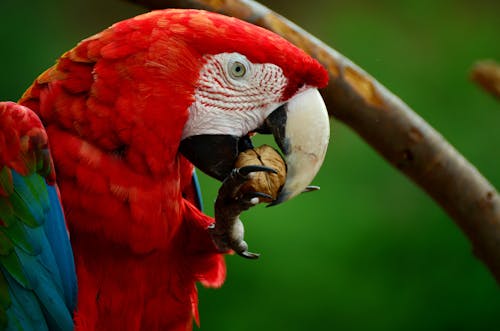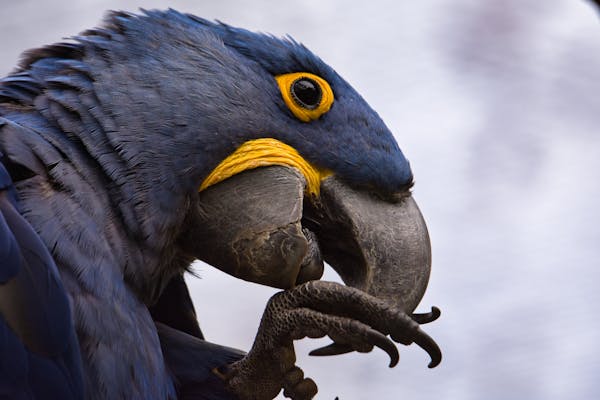10 Interesting Hyacinth Macaw Facts

The Hyacinth Macaw (Anodorhynchus hyacinthinus) is one of the most magnificent parrot species in the world with its vivid cobalt-blue plumage, bright yellow eye rings, and tremendous size. This beautiful bird is native to South America and a delight to bird watchers and wildlife lovers. So, let’s get into 10 Interesting facts about the Largest flying parrot in the world, The Hyacinth Macaw!
The Largest Flying Parrot
The Hyacinth Macaw is the largest flying parrot, reaching a length of nearly 40 inches (1 meter) with a wingspan of approximately 4 feet (1.2 meters). It is, despite its heft, a smooth and mighty flier.
Stunning Cobalt-Blue Plumage
Also known for its bright blue, nearly iridescent when lit by sunlight, finery: 7. This striking coloring aids their camouflage in their natural habitat of dense forests and savannas.
Robust Beak for Breaking Nuts
Perhaps the most amazing thing about the Hyacinth Macaw is its incredibly strong beak. This beak is adept at cracking open hard nuts and fruits – such as Brazil nuts – that are so tough that other animals have difficulty opening them.

Native to South America
With a habitat range in Brazil, Bolivia, and Paraguay, the Hyacinth Macaw is commonly found in Pantanal wetlands, woodlands, and savannas. Their habitats often are near palm trees, the source of food and nesting materials.
Social and Intelligent Animals
Macaws are among the most social and clever of all birds. They become closely bonded with their mates and often fly in pairs or small groups. Captive birds also reportedly mimic human speech and sounds.
Diet Includes Palm Nuts
The seed of the palm nuts form the bulk of the Hyacinth Macaws diet; they will eat the nuts of Acuri and Bocaiuva palms. Their powerful beak and stout digestive system are uniquely adapted for this high-fat diet.
Lifespan of Over 50 Years
The lifespan of Hyacinth Macaws in the wild is 30 years and 40 years in captivity, so they live closer to 50 years or more with proper care. Their longevity means they are a lifetime commitment for pet owners.
Endangered Status
Unfortunately, the Hyacinth Macaw is considered as vulnerable to extinction by the IUCN; its main threats include habitat loss, illegal pet trade and hunting. To protect their numbers and their habitats, conservation efforts are being made.
Tree Cavities for a Home Away from Home
Manduví trees, which provide perfect nest homes for their babies, feature prominently in Hyacinth Macaw nests. These birds lay one or two eggs, though frequently just one chick survives to maturity.
THE SHARK THAT BECAME A SYMBOL OF CONSERVATION EFFORTS
The Hyacinth Macaw’s status as a threatened species and its distinct features have made it a mast of wildlife conservation. Protection efforts for this species underscore the need to strive to preserve biodiversity.
So you see the conservation in action.
Conservation efforts are ongoing to protect the Hyacinth Macaw, led by organizations
such as the World Parrot Trust and many local groups in South America. These efforts include reforestation, a ban on the illegal trade and recently starting breeding programs.
Did You Know?
- The Hyacinth Macaw has a bite force of 400-500 psi, making it one of the strongest beak found in all birds.
- Because of their rarity and astounding beauty, they are commonly called “blue diamonds.”
Conclusion
More than being the largest of all flying parrots, the Hyacinth Macaw happens to be one of the most pleasing animals on our planet. These birds are remarkable, from their shiny blue feathers to their intelligent and social behavior. But they can only survive with our help and the conservation of their homes.
